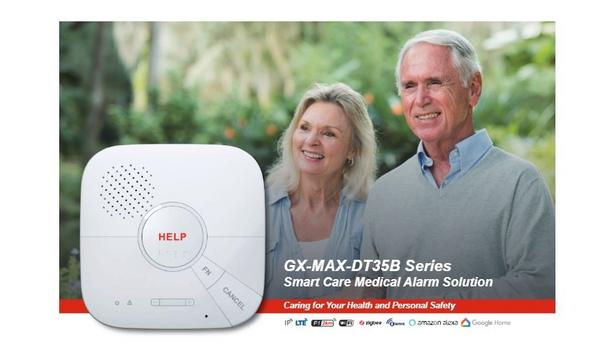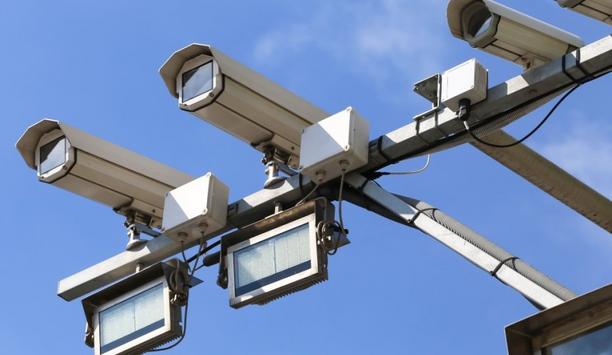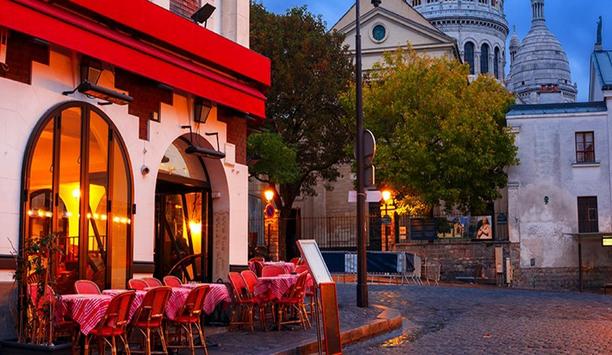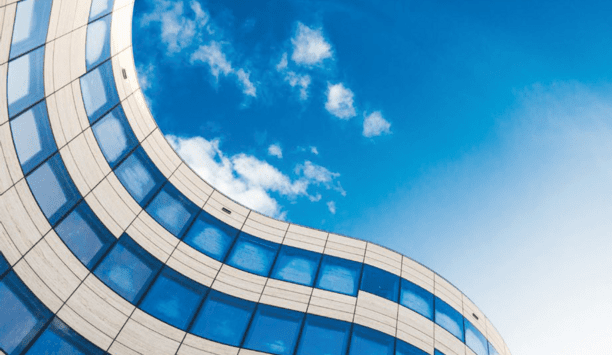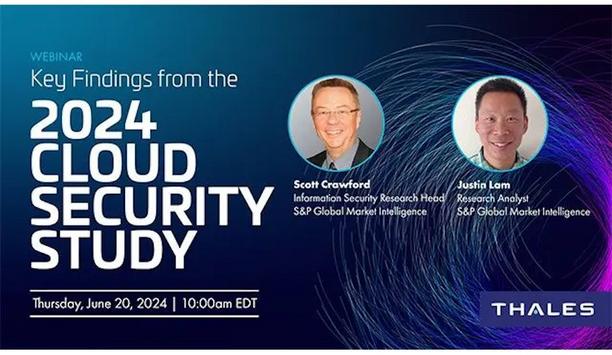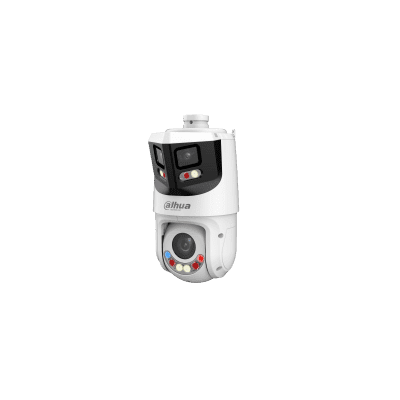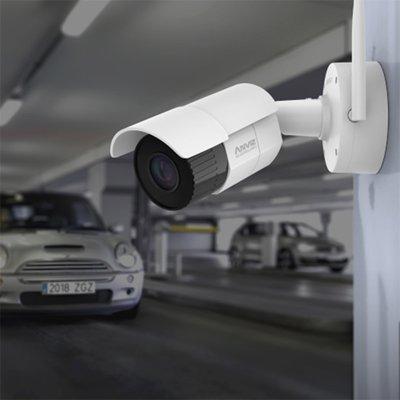Each day, as you go about your life, it's likely you'll make a guest appearance on at least 300 different CCTV screens. Britain now has more security cameras than any other country, yet their impact on crime rates is negligible, while our fear of crime is still rising. So have these screen saviours been a flop? Jay Rayner of The Observer goes behind the cameras to meet the men who watch our every move.
I am walking through London Bridge Underground station when a public announcement brings me to a halt. It starts politely - "Ladies and gentlemen ..."- before lurching into something a New York shrink might well call passive-aggressive: "Please be aware that, for your safety, this station is monitored with closed-circuit television.'" You do not need to be a professor of linguistics to be intrigued by the circumlocutions of that one. There's the stern tones of "please be aware'"chased by the motherliness of "for your safety". Finally, there's the blatant threat of the hardware. This was clearly two messages in one. What I was supposed to hear was: "This place is safe." What the criminals thronging around me were supposed to hear was: "Oi! Bad people: don't even think of doing anything dodgy in our station because we are watching you." And they are.
I scan the ceiling and quickly find more than a dozen cameras, some obvious in their rectangular white housing with the Tube logo on the outside, others disguised behind black domes. I should not be surprised to find them here. There are more than 6,000 CCTV cameras across London's Tube network, which transport bosses say will rise to 12,000 over the next five years. I step outside the station and look up at the "CCTV Zone", that space six feet above our heads, between ground and first floor, where the cameras seem to grow like so much mould on year-old jam. Again they are everywhere: peering down at bank doorways and over cash machines; looking down the aisles of my local supermarket; tucked into the ceiling at the newsagent's. There is a man near where I live who has one on the outside of his house. Again, I shouldn't be surprised.
Britain is CCTV nation. We have more of them than anywhere else in the world. How many more nobody can say. It has been claimed, time and again, that there are four million cameras in Britain and that we are each of us likely to be caught on them 300 times a day, though even the academic who came up with those numbers admits he doesn't know for sure.
CCTV doesn't solve problems. It's the people who catch criminals, not the cameras.
Ask the Austrians whether they think CCTV is a good thing, and only 24 per cent of them will say yes. Ask the British the same question and 90 per cent will give the thumbs up. More than half of us are happy to have them in public toilets, as against just 1.5 per cent of the Austrians. Two-thirds of us want them on our street. We like to be watched. We want to be watched. Or at least you do. Me, I'm not at all happy about it. Conventional wisdom has it that if you're not up to anything bad you shouldn't have a problem with being on camera. "In terms of providing people both with security and a sense of security, this is a good investment," Lord Falconer has said, on behalf of the government.
Surely, though, there are levels of naughtiness? Yes, if I'm mugging old ladies or car jacking, I should be in fear of the law. But what if this impeccably liberal Observer journalist wanted to sneak out and buy a copy of The Sun or Nuts magazine so I could look at pictures of girls in their pants without anyone knowing? Or slack off to KFC to load up on the Colonel's fat-and-carb combo, as a little light relief from the prissy platefuls I have to swallow as a restaurant critic? These aren't criminal acts, but they are things I might not wish anybody to know about. And yet I probably couldn't get away with them today because somewhere there will be a camera watching me. I suddenly feel like my private space has shrunk and that the Great British Public has allowed it to happen. And I want to know why.
Croydon might be able to offer some answers at its peak, Croydon council operated a network of nearly 500 cameras, reputedly the largest single system in the country, though, as ever with CCTV, no one is entirely sure. "We don't blow our own trumpet," says Norman Whalley, the council's systems officer, "But yes, it's pretty big." When he came here 13 years ago there were just 30 cameras, but he has built it up gradually over the past decade at a cost of £7m. Recently, National Car Parks took back the management of around 200 of those cameras, but Whalley still oversees 96 fixed and 145 so-called "pan, tilt and zoom" cameras, which can be directed from the security control room at the council offices here in the centre of Croydon.He talks enthusiastically about the various systems used. Those that are close by broadcast on microwaves straight into the control room. Others come in on the equivalent of broadband. Some of the cameras are the council's own. Others belong to Transport for London and are used for traffic monitoring, or enforcement of bus lanes, but they can all be watched here. The police have access to them, too.
 Next to us, Paul, who has worked here for 19 years and his colleague Vince, who has done it for three, flick between screens: traffic rumbling through the suburbs, or mothers pushing toddlers in buggies. Beside us is a wall of video tapes, six feet high and the same across. Whalley says they hold everything for 31 days.
Next to us, Paul, who has worked here for 19 years and his colleague Vince, who has done it for three, flick between screens: traffic rumbling through the suburbs, or mothers pushing toddlers in buggies. Beside us is a wall of video tapes, six feet high and the same across. Whalley says they hold everything for 31 days.
Nevertheless, is it really possible to catch everything that's happening, sat in front of the monitors hour after hour? "You don't focus on the same image all day," Paul says. "You're flicking with your eyes all the time. After a while it becomes intuition. What draws your attention is someone's walking pattern." Whalley agrees: "If a man is walking too close to a girl it might be a pickpocket," he says, and the others nod. "You notice things other people don't,"says Vince. "People just lead their lives going from A to B. They don't see what happens in between."
They talk about the crimes they have seen and the way they can tell the police exactly what's going on, if a fight breaks out on a Saturday night, so they know how many officers to send over. It helps them deploy resources. Paul isn't there to interfere with what people are doing, he says. He's looking after them. Sometimes in the early hours on a weekend he'll see a group of young women, clearly drunk, on their way home. Often one will peel off to go home alone. "I stay with her," Paul says. "Following her on each camera as she passes by it, just making sure she's OK,"
Norman takes me to the new control room, and lets me operate a camera. These are powerful pieces of kit, as they should be at over £4,000 each. The pictures are in colour and are almost of broadcast quality. "Each camera has the ability to identify someone of 1.5m in height at a distance of 150m," he says, proudly. We use one to close in on the menu outside a cafe. The camera is more than 100m away from the sign but I can still tell that lasagne and chips costs £3.90. Now I pick up a woman walking down the street towards the lens. Simply because I can, I begin to follow her, using the joy stick to pan down.

I don't admit it to Norman, but there is something deeply intoxicating about being able to do this; to sit here so many miles away, moving a camera to watch in detail as someone goes oblivious about their day. It feels somehow as if I am not just controlling the camera, but controlling the woman, too. Norman rests his hand on my shoulder and says, "I think you should stop that." I shove the camera away from the woman so it looks back up the street. I think about Paul, looking out for those lone women on their way home, an electronic version of the angels in Wim Wenders's Wings of Desire. And I wonder whether the problem is not with CCTV or the way it is used but with the way that I, with my tendency to paranoia, imagine it might be, which is a different thing entirely.
And then I remember Sally Anne Bowman. Sally Anne, a promising model, was sexually assaulted and knifed to death last September, a short distance form her home in South Croydon. There was CCTV footage of her that evening: she was seen at Lloyds Bar in Croydon. She was seen leaving a club at about 1am. She was seen coming back into Croydon by taxi, where she was picked up by her ex-boyfriend who drove her home. All of this was captured on CCTV. After that, the pictures stopped. Sally Anne was killed on a quiet street where there were no cameras. Police are still hunting for her killer.
Though the cameras failed to help in the case of Sally Anne, CCTV is still seen as a Very Good Thing and, to understand why, we have to go back 13 years to the murder of Jamie Bulger. "When the abduction happened and we got those incredibly grainy images of Bulger being led away," says Peter Fry of the CCTV User Group, "the cameras became a major player in a horrific event." For a week, those pictures came into our homes and we came to understand that, through these images, the police had been able to establish that the toddler's abductors were children. Clive Norris, Professor of Sociology at Sheffield University, has undertaken detailed research into the use of CCTV in Britain." A moral panic about rising crime rates and what could be done about it accompanied the Bulger case," he says. But those pictures also held promise."
Up to that point, CCTV was rare in Britain. A few cameras were introduced in the Fifties to watch traffic and, by the early Nineties, a couple of local authorities, led by entrepreneurial local politicians, had introduced small schemes. 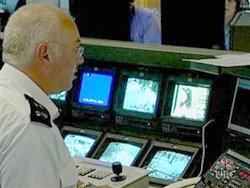 Now, officials within the Crime Prevention Unit of the Home Office began looking at what CCTV could do for them. In 1994 a set of guidelines called CCTV Looking Out For You was published by Michael Howard's Home Office.
Now, officials within the Crime Prevention Unit of the Home Office began looking at what CCTV could do for them. In 1994 a set of guidelines called CCTV Looking Out For You was published by Michael Howard's Home Office.
On the back cover it announced a city challenge competition, offering a fund of £2m for new CCTV projects which had to be matched with local money. "We were completely overwhelmed with applications," says Philip Edwards, a former Dixons executive who had been seconded to the Home Office and who co-wrote the guidelines. So there were more competitions and each one was over-subscribed. Between 1994 and 1997 £45m of government funds was pledged to CCTV, all of which had to be matched locally. Since then, New Labour has spent another £170m.
"This is one of the reasons CCTV grew so strongly here as against in other European countries," says Norris. "It was centrally funded." The other reason was a complete lack of regulation. In places like Germany or Scandinavia a right to privacy is written into the constitution. Here, the only legislation that affected CCTV was a relaxation of the planning laws. Among other things the legislation was designed to make it easier to put up mobile-phone masts to help the networks spread. As a result, the CCTV cameras spread, too. "The planning laws also resulted in the death of town centres," says Norris. "And out-of-town shopping centres became the icon of the age." Town centres wanted to look as shiny and secure as the out-of-town shopping centres to attract the retailers back. A thrilling CCTV system seemed to be the best way to make that impression. It was Norris who, in 1998, came up with the estimates of how many cameras there then were in Britain - more than 4 million - and how many times each of us might be caught on them - 300. "It's interesting to see those numbers repeated in the media, because they can be described only as guestimates," he says.
| Surveillance obsessed? | |
| February 2003 November 2005 September 2005 |
In the Nineties, before heading up the CCTV User Group, Peter Fry was director of operations for Hart District Council in Northamptonshire. "We had a lower-than-average crime rate but our local councillors were still very keen on having CCTV." The story was repeated across the country. It didn't matter whether it actually did reduce crime - they wanted it anyway. In 1996, after Thomas Hamilton killed 16 children in Dunblane, Philip Edwards at the Home Office received countless requests for CCTV to be installed in schools. When he asked why, they said it would stop another Dunblane happening. "I told them it wouldn't. All it would have done at Dunblane was let you watch it happen. CCTV doesn't solve problems. It's the people who catch criminals, not the cameras."
The statistics on crime bear this out. It is true that since 1995 overall crime rates have been dropping in the UK. But a major survey of 14 CCTV schemes published last year showed their impact on local crime rates was either negligible or that crime rates actually went up. At the same time fear of crime has also gone up. Meanwhile, clear-up rates - the number of crimes that the police solve - have gone down.
Of course, only a fool would argue that CCTV can have no impact on crime. We all saw the images after the London bombings of 7 July. Rarely does a week go by without an aspect of some grisly outrage or other being picked up on cameras. As Norris puts it, "If you ask leading policemen whether they would rather have CCTV than not, they will always say yes."
All that aside, one thing is certain: we, its subjects, genuinely do like some of what those cameras pick up. In 2001 an enterprising video producer released Caught in the Act!, a compilation of people shagging in doorways, as recorded by CCTV cameras. It sold very nicely, thank you. Likewise TV shows full of footage of drivers doing stupid things on the roads get huge audiences and then came the phenomenon that is Big Brother. Indeed, CCTV may be one of the first pieces of technology to have directly influenced fashion: after all, what better way is there to hide your identity from the cameras than inside a hoodie?
To see the future of CCTV we need to go to Spitalfields in east London, where the Shoreditch Trust, a local regeneration agency, is piloting a new initiative: CCTV for the masses. Instead of the images only being seen by the likes of Norman Whalley and his team, local residents will be able to watch them, too, on a broadband connection. For all its hip associations, the area is actually the second most deprived in London. The Shoreditch Trust, set up under the government's New Deal for Communities programme, works with residents to improve everything from education and housing to opportunities for businesses.
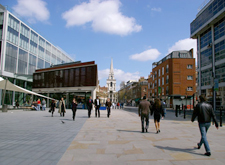 One of the problems is that, because of low incomes, few households have access to technology. Hence the Digital Bridge, a cheap broadband connection offering everything from video on demand to email to, yes, CCTV images of the local community. The hardware and all the services will cost around £3.50 a week.
One of the problems is that, because of low incomes, few households have access to technology. Hence the Digital Bridge, a cheap broadband connection offering everything from video on demand to email to, yes, CCTV images of the local community. The hardware and all the services will cost around £3.50 a week.
The cameras are part of a channel called Safe and Sound. In the pilot there will be 11 cameras. Eventually there will be up to 400 across the area. "The demand for this comes directly from the residents," says Dan Hodges of the Shoreditch Trust. "Crime is falling but fear of crime is rising and the moment we suggested we could do this the response was really positive. It surprised us." In the middle of the screen is a shot of a local high street. At the bottom are other images which the viewer can bring up. But here's the thing: they will not be able to zoom in using the cameras. They will not be able to tilt and pan. They can only look at what they're given and that's not very much. "There have to be safeguards," Hodges says. "People won't be able to watch each other's homes. There are clear civil liberties issues involved."
Later, I go for a walk around the area with Michael Pyner, chief executive of the Shoreditch Trust. He wants me to understand what this patch of the city looks like; that it's really not just warehouse apartments and design consultancies. "This is an opportunity for people to empower themselves," he says of the CCTV project. "We've had accusations that it's Big Brother, but it's not. It's Little Brother. Everyone gets to look." Except that, because of the restrictions, it won't actually help solve crime. "No, but it may help solve the fear of crime. Look, it may not work. In two years' time people may still be scared. At which point we'll say this wasn't the solution." Now, though, local residents are very keen.
There are more than 6,000 CCTV cameras across London's tube network, which transport bosses say will rise to 12,000 over the next five years
Afterwards I return to Haberdasher Street, one of the roads which will be part of the scheme . It seems to me a CCTV camera is only a substitute for being able to stand in that location watching what's going on for yourself. Thus, Christopher Isherwood style, I will be a camera. I want to see what is so intriguing about this street, what exactly will make it so damned watchable. I stand there for half an hour. It all seems pretty innocent.
Then I realise there is something suspicious here: it is a large, dark man in a black jacket. He has a notebook in his hands and he is staring up and down the street. That man is me. Other than that Haberdasher Street is now empty. No people, let alone any crimes. It's time to go home.
© Guardian Newspapers Limited 2006.






